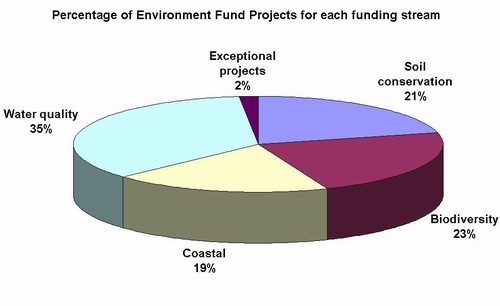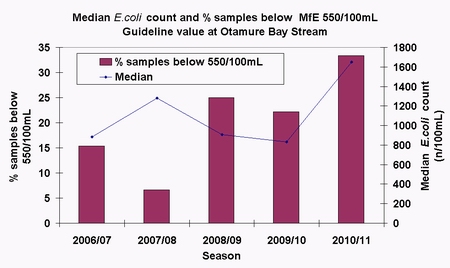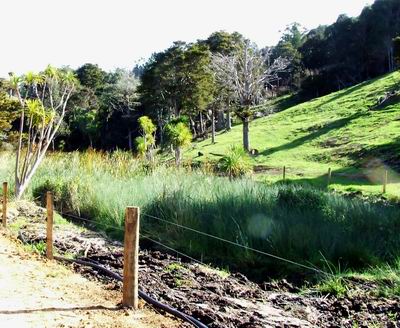Environment Fund
The 2010-2011 funding year has been as successful as ever, with many outstanding projects completed under the new funding streams.
Number of Environment Fund projects completed by district.
|
District |
Number of projects |
Percentage |
|
Far North |
22 |
38 |
|
Whāngārei |
21 |
37 |
|
Kaipara |
14 |
25 |
|
|
57 |
100 |
The change in funding streams in 2010 meant that the most popular projects during 2010-2011 were fencing, primarily of streams and wetlands for water quality, biodiversity, soil conservation and erosion control. The changes in funding streams in 2009-2010 have focussed projects into these areas.

Case study: Otamure Bay Stream
Otamure Bay is located north of Whananaki on Northland's east coast. The bay is a popular holiday destination with the Department of Conservation camping ground located right by the beach.
Otamure Bay Stream flows onto the beach at the eastern end, and during summer this stream often becomes stagnant and pools on the beach when the exit is partially blocked due to the build up of sand.
Water quality in Otamure Bay Stream has been monitored as part of the recreational bathing programme since November 2006. Bacterial contamination at this site has often been high and the stream has been above the Ministry for Environment ‘Action' threshold of 550 E.coli/100mL for 76 percent of sampling occasions.
There are two tributaries that flow into the stream before it reaches the beach. Both tributaries run through areas that are actively farmed with beef cattle. This site is also noted for its use by the critically endangered species, Brown Teal (Pāteke) Anas chlorotis.
Results from faecal source tracking at this site over three seasons indicate that the sources of contamination at this site are ruminants and wildfowl. The avian marker identified in these samples shows the faecal pollution is from ducks (possibly brown teal).

The majority landowner in the catchment has embarked on an extensive fencing programme over the past six years. The landowner's property contains many mature native bush remnants, wetlands and small streams. The wetlands on the property are also key Pāteke breeding grounds monitored by the Department of Conservation.
The landowners have used funding from the Environment Fund to help cover the cost of fencing many hectares of native bush, 3.6km of wetland and stream fencing, 1km of estuary/coastal wetlands, 2km bush/stream and associated wetland fencing. In the past, the landowners have also fenced other areas on their property without financial assistance.
 Fenced wetland in Otamure Bay Stream catchment.
Fenced wetland in Otamure Bay Stream catchment.
While it is too soon to know the extent the land management changes are having on water quality, provisional results indicate that the presence of the herbivore marker seems to have decreased and was only found in one of the last four samples taken for faecal source tracking.
The percentage of samples that are below the Ministry for Environment ‘Action' threshold of 550 E.coli/100mL also appears to be increasing. Ongoing monitoring is required to determine if these changes are due to the land-management activities or inter-annual variation.
